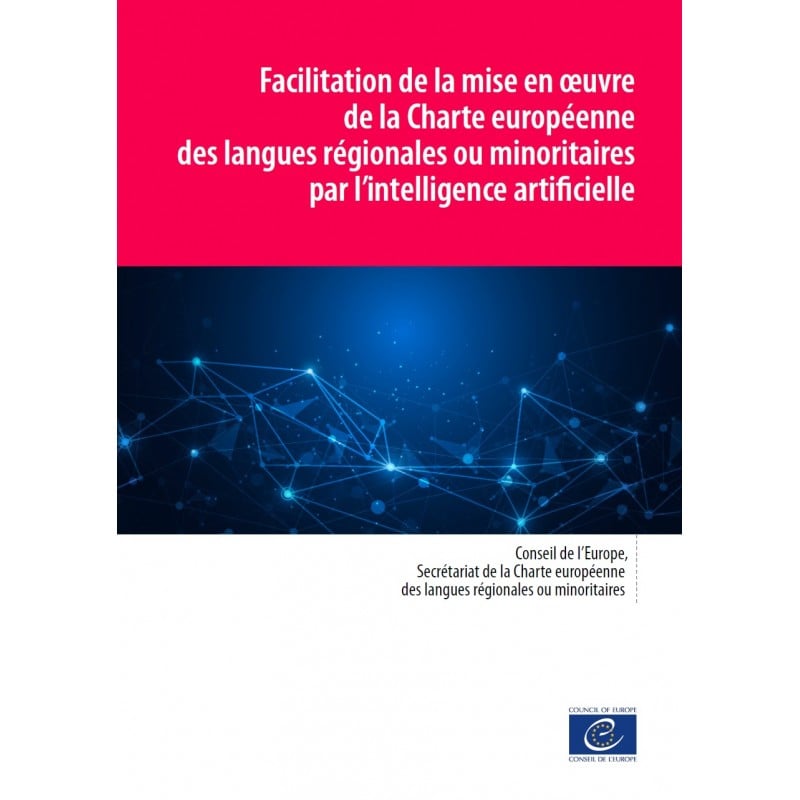1. General reasons for using AI to facilitate the implementation of the Charter
2. Machine translation
2.1 Machine translation methods
2.2 Use of existing applications
2.3 Development of new applications
3. Other applications of natural language processing (NLP) and usefulness in the implementation of the Charter
3.1 Regional or minority languages in private life (Article 7.1.d)
3.2 Regional or minority languages in education (Articles 7.1.g, 8.1.f ii, iii)
3.3 Regional or minority languages in justice (Articles 9.1.ai-iv, 9.1.bi-iii, 9.1.ci-iii, 9.1.d, 9.3)
3.4 Regional or minority languages in public administration and services
3.4.1 Dialogueurs (Articles 10.1.a.i-iv, 10.2.a, 10.2.b, 10.3.a— c)
3.4.2 Smart Search (section 10.2.g)
3.4.3 Speech synthesis for the announcement of street names (article 10.2.g)
3.4.4 Traduction automatique (articles 10.1.a.i-v, 10.1.b, 10.1.c, 10.2.a-f, 10.3.a-c, 10.4.a)
3.5 Regional or minority languages in the media
3.5.1 Automatic generation of subtitles (articles 11.1.ai-iii, 11.1.ci-ii)
3.5.2 Automatic extraction of information (article 11.1.ei-ii)
3.6 Regional or minority languages in cultural activities and facilities
3.6.1 Structuring of data (sections 12.1.g, 12.1.h)
3.6.2 Automatic translation (sections 12.1.a, 12.1.b, 12.1.c)
3.6.3 Automatic generation of subtitles (articles 12.1.b, 12.1.c)
3.7 Regional or minority languages in economic and social life
3.7.1 Sentiment Analysis (Section 13.1.c, 13.1.d, 13.2.b) .
3.7.2 Automatic translation (sections 13.1.a, 13.1.d, 13.2.a, 13.2.b, 13.2.d, 13.2.e)
3.8 Regional or minority languages in cross-border exchanges (Articles 7.1.i, 14)
Perspectives


